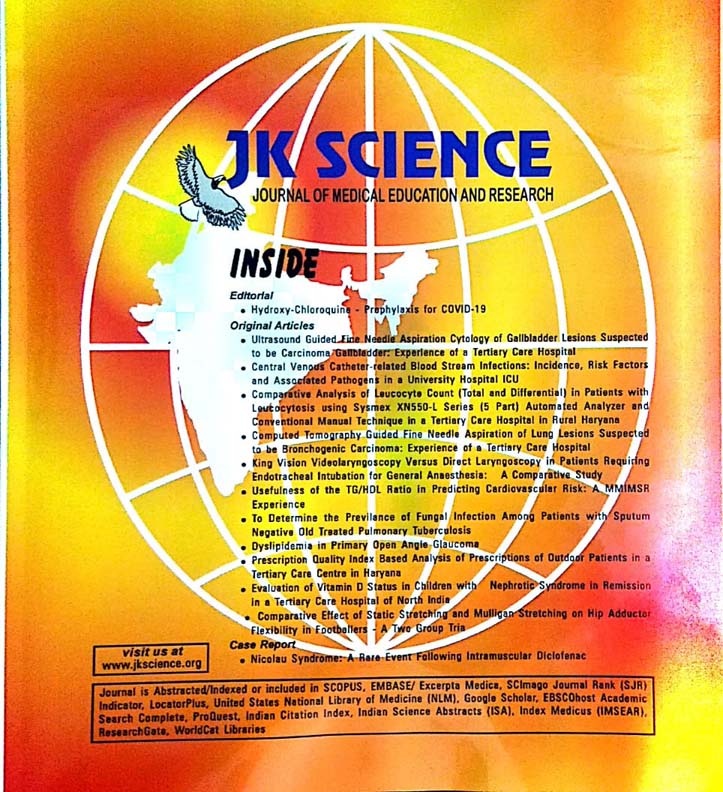Fine Needle Aspiration Cytology of Cutaneous Metastatic Nodules: An Institution Based Study
Keywords:
Skin, Metastases, Nodules, Fine Needle Aspiration Cytology, CytomorphologyAbstract
Background: Cutaneous metastases are quite rare and represent growth of malignant cells in skin from an internal malignancy and indicate poor prognosis. Fine needle aspiration cytology (FNAC) is an important technique in the early diagnosis of such lesions.
Objective: To evaluate the cytomorphological features of cutaneous metastatic nodules on FNAC.
Material and Methods: This retrospective diagnostic analytical study was carried out in the department of pathology from January 2016 to December 2020. Forty-Four patients diagnosed as cutaneous metastasis on FNAC were included in the study. FNAC slides along with record of the patients were retrieved and findings recorded. The smears were examined in detail for cytomorphological evaluation.
Results: 26 patients were males and 18 were females with M:F ratio of 1.4:1. The site of primary malignancy was known in 32 cases only. Chest wall was the commonest site of cutaneous metastasis, with solitary palpable skin nodule being the commonest clinical presentation. In patients with known primary, lung carcinoma and breast carcinoma were the commonest primary malignancy in males and females respectively. Metastatic adenocarcinoma was the commonest cytomorphological type of malignancy (31.8%) followed by squamous cell carcinoma (SCC). FNAC diagnosis helped in detecting the primary site in 5 (41.6%) out of 12 cases with unknown primary malignancy.
Conclusions: FNAC is an easy, rapid and minimally invasive procedure in the diagnosis of cutaneous metastases.
Downloads
Downloads
Published
How to Cite
Issue
Section
License
Copyright (c) 2022 JK Science: Journal of Medical Education & Research

This work is licensed under a Creative Commons Attribution-NonCommercial-ShareAlike 4.0 International License.





